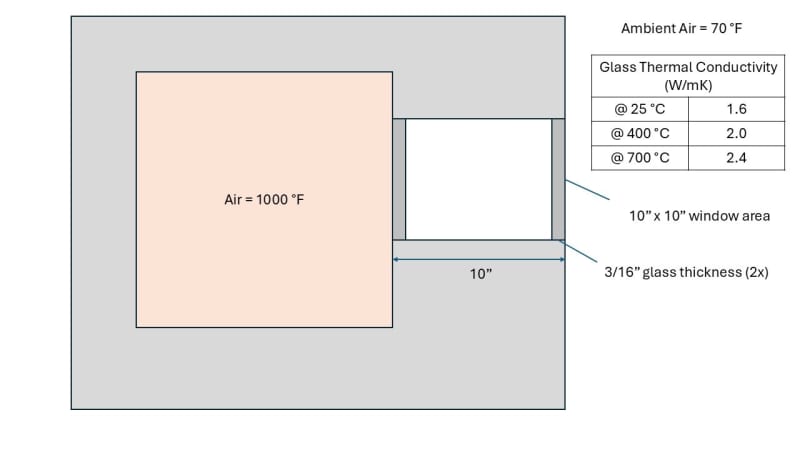PTam30
Mechanical
- Sep 23, 2024
- 5
Hi,
I don't have much background with heat transfer and am hoping someone can help, please. I have an oven that I'm looking to add a window to, so it will go oven interior to ceramic glass pane to air gap to ceramic glass pane to outside (with the option to add more glass panes as necessary). The oven will go up to maximum 1000 deg F. I have the thermal conductivity of the glass on the attached picture.
How do I determine the final touch temperature of the outside glass surface? Thanks for any help!

I don't have much background with heat transfer and am hoping someone can help, please. I have an oven that I'm looking to add a window to, so it will go oven interior to ceramic glass pane to air gap to ceramic glass pane to outside (with the option to add more glass panes as necessary). The oven will go up to maximum 1000 deg F. I have the thermal conductivity of the glass on the attached picture.
How do I determine the final touch temperature of the outside glass surface? Thanks for any help!

